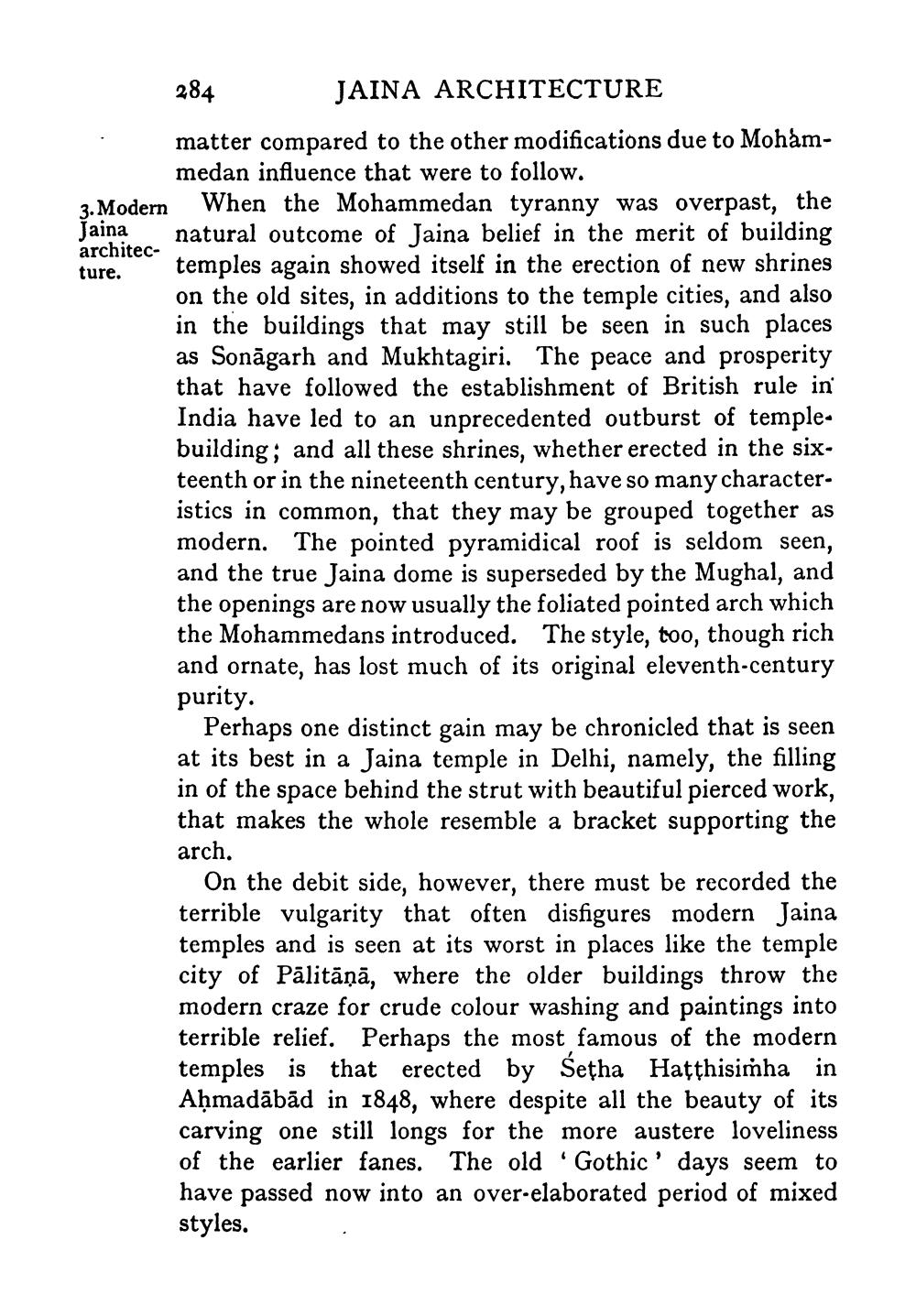________________
ture.
284
TAINA ARCHITECTURE matter compared to the other modifications due to Moham
medan influence that were to follow. 3. Modern When the Mohammedan tyranny was overpast, the Jaina natural outcome of Jaina belief in the merit of building architec
temples again showed itself in the erection of new shrines on the old sites, in additions to the temple cities, and also in the buildings that may still be seen in such places as Sonāgarh and Mukhtagiri. The peace and prosperity that have followed the establishment of British rule in India have led to an unprecedented outburst of temple. building; and all these shrines, whether erected in the sixteenth or in the nineteenth century, have so many characteristics in common, that they may be grouped together as modern. The pointed pyramidical roof is seldom seen, and the true Jaina dome is superseded by the Mughal, and the openings are now usually the foliated pointed arch which the Mohammedans introduced. The style, too, though rich and ornate, has lost much of its original eleventh-century purity.
Perhaps one distinct gain may be chronicled that is seen at its best in a Jaina temple in Delhi, namely, the filling in of the space behind the strut with beautiful pierced work, that makes the whole resemble a bracket supporting the arch.
On the debit side, however, there must be recorded the terrible vulgarity that often disfigures modern Jaina temples and is seen at its worst in places like the temple city of Pālitāņā, where the older buildings throw the modern craze for crude colour washing and paintings into terrible relief. Perhaps the most famous of the modern temples is that erected by Setha Haţthisisha in Aḥmadābād in 1848, where despite all the beauty of its carving one still longs for the more austere loveliness of the earlier fanes. The old Gothic' days seem to have passed now into an over-elaborated period of mixed styles.




